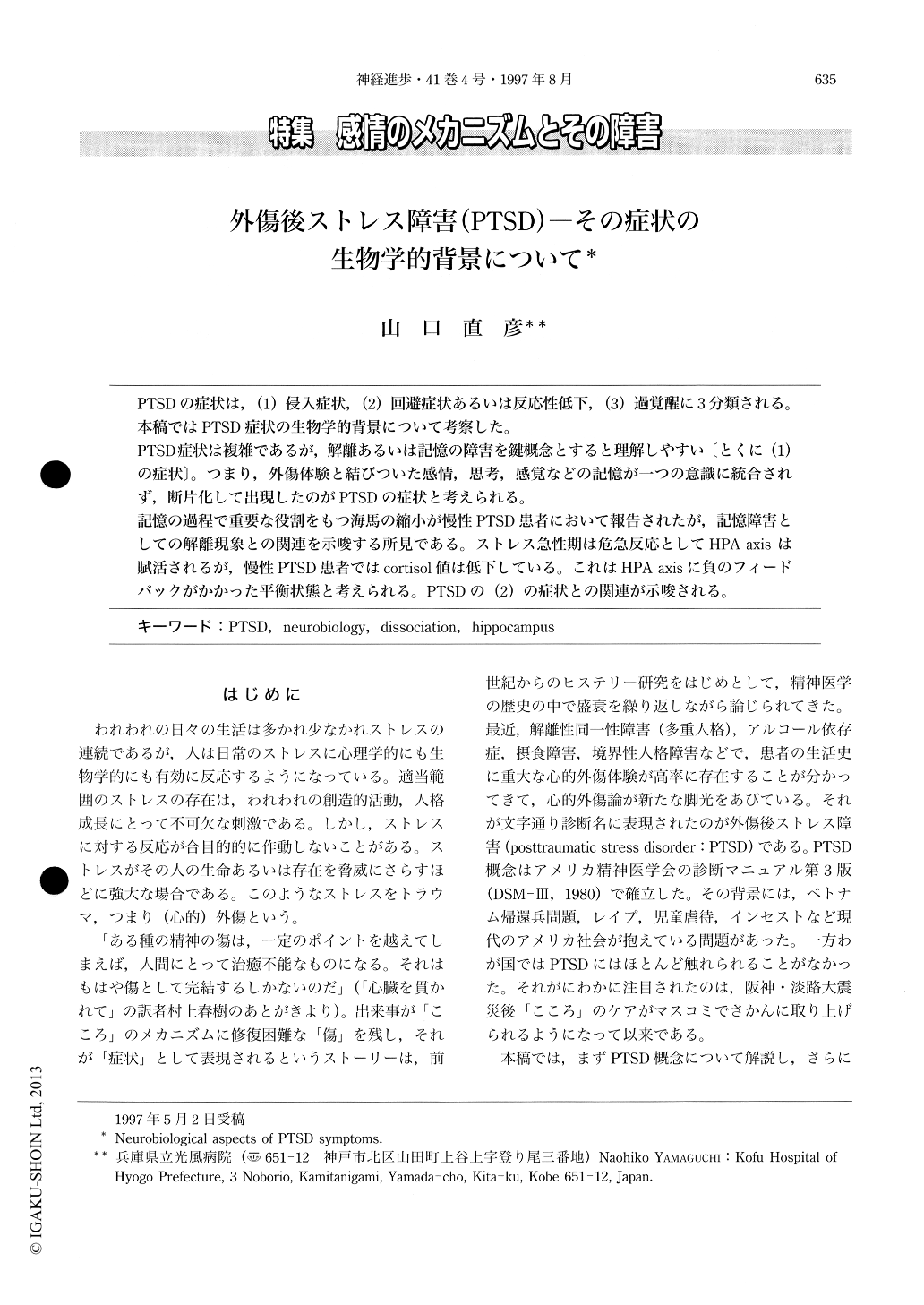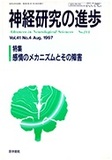Japanese
English
- 有料閲覧
- Abstract 文献概要
- 1ページ目 Look Inside
PTSDの症状は,(1)侵入症状,(2)回避症状あるいは反応性低下,(3)過覚醒に3分類される。本稿ではPTSD症状の生物学的背景について考察した。
PTSD症状は複雑であるが,解離あるいは記憶の障害を鍵概念とすると理解しやすい〔とくに(1)の症状〕。つまり,外傷体験と結びついた感情,思考,感覚などの記憶が一つの意識に統合されず,断片化して出現したのがPTSDの症状と考えられる。
記憶の過程で重要な役割をもつ海馬の縮小が慢性PTSD患者において報告されたが,記憶障害としての解離現象との関連を示唆する所見である。ストレス急性期は危急反応としてHPA axisは賦活されるが,慢性PTSD患者ではcortisol値は低下している。これはHPA axisに負のフィードバックがかかった平衡状態と考えられる。PTSDの(2)の症状との関連が示唆される。
The symptoms of posttraumatic stress disorder (PTSD) are subdivided into intrusion, avoidance or numbing, and hyperarousal. Intrusion symptoms are phasic and avoidance symptoms are constant. Hyperarousal comprises a mixture of phasic and constant symptoms. Numerous neurobiological systems appear to be implicated in those symptoms. We discussed a neurobiological aspects of PTSD symptoms. The individuals with PTSD had failed to psychologically integrate their traumatic experiences and used dis-sociation as a way of dealing with strong affects.

Copyright © 1997, Igaku-Shoin Ltd. All rights reserved.


